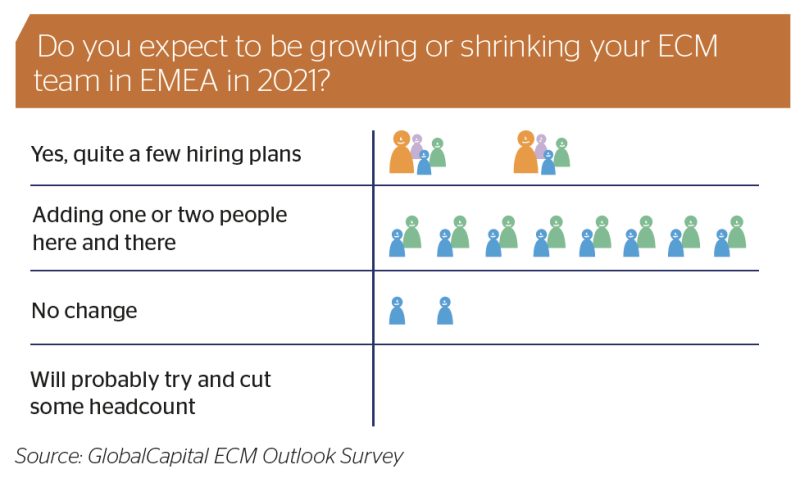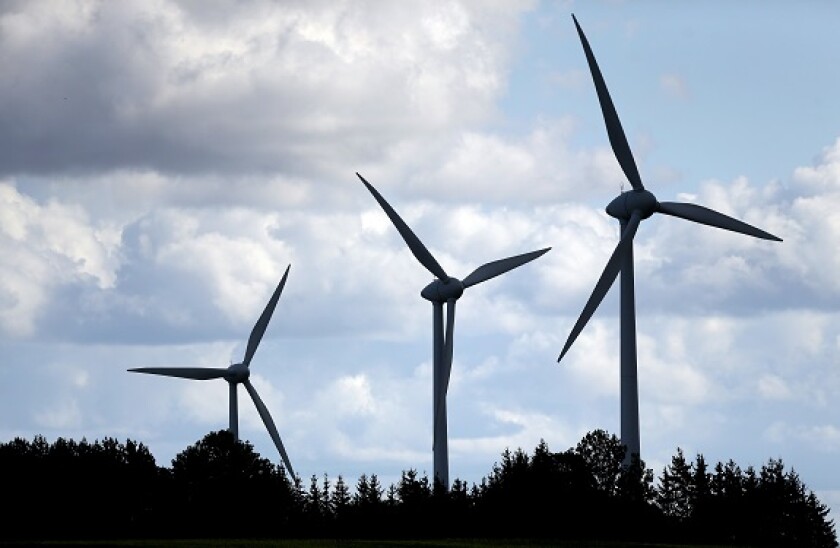Every explanation of what environmental, social and governance investing is starts by stating that it began in equity markets and has spread to bonds and other asset classes. Paradoxically, however, when it comes to new capital raising, the bond market has led the way.
While debt capital markets have been obsessed with green bonds — and more recent offshoots like sustainability-linked notes — for at least seven years, the equity capital market has largely ignored the subject.
ESG considerations were not felt to be relevant to most companies that came to the market, and pure play green companies, such as renewable energy developers, were rare visitors.
In 2020 that changed. ESG has been an unmistakeable theme in both straight equity and equity-linked debt markets.
The most visible change has been in convertible bonds, where there has been a sudden but strong craze, aping the regular bond market, for green bonds in which the company allocates the proceeds to green projects.
Two months later, Schneider Electric, the French electrical systems group, brought the first sustainability-linked CB. Unlike with a green instrument, the issuer can use the proceeds how it likes, but promises to pay investors a step-up coupon if it fails to hit key performance indicators for its sustainability.A flurry of green CB issues in2020 was joined in September by a €2.4bn deal from Electricité de France (EDF), which dwarfed all previous issuance.
The €650m deal was deemed an overwhelming success and investors hope to see more of both green and sustainability-linked convertibles, as well as green-themed equity deals.
In 2021 the US will have a new president, and Joe Biden’s inauguration is expected to herald renewed commitment from the US to fighting climate change.

A fresh impetus for green initiatives there will add to the momentum of the European Union’s Green Deal. However, the driving forces behind green ECM are not just top-down dictates from governments.
“The key driver behind ESG has really been the changing nature of the investment fund industry, and the exponential growth of ESG funds,” says Salvatore Branca, director in ECM, southern Europe at BNP Paribas, which was global co-ordinator and structuring agent on the Schneider deal. “I look at the Iberian market and the fact that Solaria [the Spanish solar power company] is trading up 150% year-to-date, and is the best performing stock on the market by a factor of almost one and a half, shows the support for this sector.
“The sector is delivering on its promise of growing an investment pipeline, but at the same time, it is really benefiting from the overall dynamic of the asset management industry and this huge growth in ESG funds under management.”
As equity investors seek more exposure to companies that will contribute to and benefit from the low carbon transition, the demand to gain that exposure from new issues will also increase, as these deals allow investors to buy in far greater size. But for this to happen, the market may need to change.
More innovation
Although 2020 brought significant structural innovation in green convertible bonds to attract investors, there have been few ways to play the theme in cash equities, outside participating in an IPO or equity raising for a renewable energy company.
These deals have been overwhelmingly popular with investors and the stocks have continued to rise in aftermarket trading. Shares in Neoen, the French renewable energy producer, climbed around 54% from January to November, while Danish renewable energy company Ørsted is up 66%, French renewable generator Voltalia 38% and Norway’s Scatec Solar 93%.
All of these companies have been equity capital markets issuers in the last two years and have enjoyed huge participation in their deals.
However, green-minded investors are keen to be offered more ECM paper linked specifically to green investments, or to green KPIs, like the Schneider convertible. There are hopes that the same sort of structural innovation might be applied to straight equity.

“We were on the Schneider deal and it’s a very interesting structure, with the KPIs and the sustainability framework, and how it triggers a payment upon maturity if they don’t obtain them,” says Suneel Hargunani, co-head of EMEA for equity capital markets at Citi.“That is definitely more of a theme.
“We know ESG is going to be important, but we are going to see it more in the equity capital markets product like we’ve seen in green bonds and in convertible bonds. The question really is how we move on from there to equity raises, where the sources are earmarked for only ESG; I can see that coming in next.”
Green shoots for converts
That kind of innovation is out there to play for. What seems certain is that green and sustainability-linked convertibles will go on to new heights, propelled by investor demand.
Many ECM banks now have experience of the instruments. Besides BNP Paribas, the other bookrunners on EDF’s deal were Bank of America, Crédit Agricole, Goldman Sachs, JP Morgan and Morgan Stanley.
Despite the size of EDF’s bond, the investable universe of green CBs remains too small for funds to be dedicated entirely to them. As most of the deals have been small, often around $200m, liquidity is a concern too, but this could change as the market grows.
“We had the first jumbo European green convertible from EDF, which was a massive success, and many smaller renewable energy companies coming to market in Europe and the US,” says Eric Daniel, head of convertible bonds at Quaero Capital in London. “Today with the global universe you cannot launch a pure green ESG convertible fund because it is too small but in the future who knows, especially if this part of the universe increases massively.”
With Biden promising that the US will rejoin the Paris Agreement and the EU strengthening ESG reporting requirements for issuers and investment firms, green convertible issuance has a following wind.
“Those types of deals are only going to grow,” says Martin Haycock, a senior product specialist at NN Investment Partners in London. “There will be more and more of them. You only need to look at the lengths that the EU are going to, to make the EU more sustainable. We have also got Biden coming into office in the US. It is not unreasonable to argue that the US is still some way behind.”
Pricing advantage
One category of potential green CB issuer, to which both EDF and Schneider belong, is those that have already issued straight green bonds. They may be able to use their existing green bond framework documents to bring a green CB, finding a whole new camp of investors — and very attractive pricing.
The deals are also seen as a way for companies to show they are serious about tackling the climate emergency.
“It is good that these companies have other choices, and they do have, if they are willing to undertake the requirements of a green bond, a very interested set of investors who want to invest this way,” says Tony Huang, a portfolio manager at Advent Capital Management in New York. “We are not depending on this niche. We like it and we think it is good for the health of our market to have these green issues, but we invest in companies all the same, regardless of whether it is green or not.”
Nevertheless, many fund managers face increasing pressure from clients to explain what they are doing about sustainability and the climate crisis, and to justify their selections.
This is leading them to spend more time searching for and scrutinising companies that may meet their ESG criteria.
“We are responding to more proposals which have ESG questions in them,” Huang adds. “Clients want to see the investment team here has a process to take a look at it. They like to see that there is a thoughtful process. It is important for investment teams to offer that capability within an investment process that focuses primarily on fundamentals and financials.”
As supply grows, and the increasing demand begins to be satisfied, the convertible bond market needs to be careful to avoid virtue signalling or, even worse, greenwashing.
These accusations have been levelled at some companies that have issued ordinary green bonds, but so far, have largely been avoided in convertible bonds.
“What I am hopeful about is that it doesn’t become a somewhat empty sign of a company’s bona fides when it comes to their commitments to becoming truly sustainable and avoiding long term risks when it comes to ESG standards,” says Justin Craib-Cox, a portfolio manager at RWC Partners in London.
Keeping the market honest and rigorous is not just up to issuers. The ultimate responsibility for maintaining standards — which will require learning a whole new set of skills — will have to rest with investors. GC
